Washing towels properly is indeed important for maintaining their freshness and longevity, you can maintain the quality and freshness.
Wash Towels that Are New with Vinegar
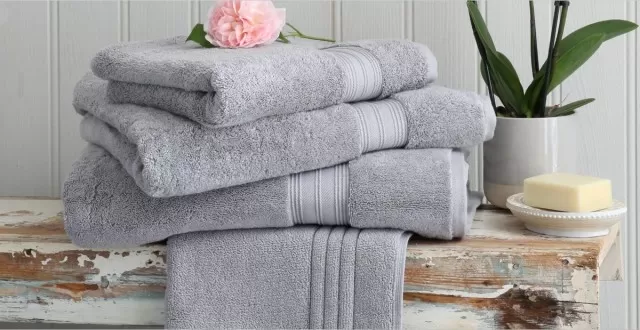
Washing new towels before their first use is indeed a good practice to remove any coatings or finishes that may hinder their absorbency.
Here’s a step-by-step guide on how to wash towels, including Using Vinegar for color preservation:
Sort the Towels:
Separate your towels by color to avoid color bleeding.
Wash white towels separately or with other white items.
Pre-Treat Stains:
If you notice any stains on your towels, pre-treat them with a stain remover or a mixture of water and detergent.
Follow the instructions on the stain remover product.
Load the Washer:
Place the towels in the washing machine, ensuring not to overload it.
Leave enough space for the towels to move around freely.
Choose the Water Temperature:
For colored towels, use warm water (around 40-60°C or 100-140°F) to help preserve the colors.
For white towels, use hot water (around 60-90°C or 140-194°F) to ensure thorough cleaning.
Detergent and Vinegar:
Add the appropriate amount of detergent to the washing machine according to the product instructions.
To help set the colors and remove detergent residue, add ½ to 1 cup of White Vinegar to the rinse cycle.
Start the Wash Cycle:
Select the appropriate wash cycle for your towels.
Follow the instructions on your washing machine for the best cycle option.
Dry the Towels:
Once the wash cycle is complete, remove the towels from the machine and shake them out to fluff them up.
Tumble dry them on a medium to high heat setting or hang them outdoors to air dry.
By following these steps, you can ensure that your new towels are properly washed, making them more absorbent and ready for use.
Washing colored towels with similar shades and using vinegar during the rinse cycle helps preserve their colors and removes any detergent residue.
How Frequently to Wash Towels
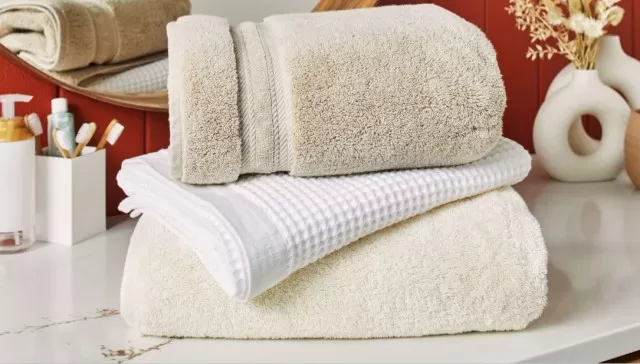
Washing towels every three to four days is a good guideline to maintain cleanliness and freshness.
Here are some additional tips for washing towels:
Frequency:
Wash towels every three to four days or as soon as they become visibly soiled or develop an unpleasant odor.
Water Temperature:
For colored towels, use warm water (around 40-60°C or 100-140°F) to help preserve their color.
For white towels, use hot water (around 60-90°C or 140-194°F) to ensure thorough cleaning.
Detergent:
Use a good-quality laundry detergent that is suitable for the type of fabric and water hardness in your area.
Follow the instructions on the detergent packaging for the appropriate amount to use.
Bleaching:
If necessary, use color-safe bleach for colored towels and non-chlorine bleach for white towels.
Follow the instructions on the bleach packaging and test it on a small, inconspicuous area of the towel before using it on the entire load.
Load Separation:
To prevent color transfer and maintain the appearance of white towels, wash them separately or with other white items.
Avoid washing towels with clothing items that have zippers, hooks, or other hardware that may snag or damage the towel loops.
Fabric Softener:
Avoid using fabric softeners or dryer sheets on towels as they can reduce their absorbency.
The softener residue can build up on the fibers and make the towels less effective at drying.
Drying:
Dry towels thoroughly to prevent mildew and odors.
Use the appropriate dryer setting, such as regular or automatic, and remove the towels from the dryer as soon as they are dry to the touch. If possible, allow towels to air dry outdoors for a fresh scent and natural softness.
By following these guidelines, you can keep your towels clean, fresh, and in good condition for extended use.
Properly Dry Towels
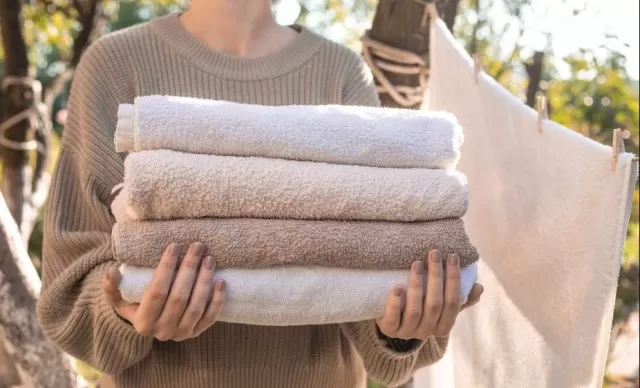
Properly drying towels is crucial to prevent mildew and maintain their quality.
Here are some tips for drying towels effectively:
Shake Out Excess Moisture:
Before placing towels in the dryer, give them a good shake to remove any excess moisture.
This helps to aerate the fibers and promote faster drying.
Use the Right Dryer Setting:
Select the regular or automatic setting on your dryer, which typically uses the highest heat and is suitable for drying durable fabrics like towels.
Avoid using low heat settings as they may prolong the drying time.
Avoid Overdrying:
While it’s important to ensure towels are fully dry, be mindful of overdrying them.
Excessive heat can damage the cotton fibers and make the towels feel stiff and rough. Remove the towels from the dryer as soon as they are dry to the touch.
Separate Loads:
It’s best to dry towels separately from lighter and more delicate fabrics.
Towels tend to generate a lot of lint, and drying them with other items can transfer lint and reduce the softness of the towels.
Fluff and Fold:
Once the towels are dry, give them a gentle fluff by shaking them out and folding them neatly.
This helps to restore their fluffiness and makes them easier to store.
Air Dry if Possible:
If weather permits, consider air drying your towels outdoors.
Hanging them on a clothesline or drying rack in direct sunlight can help remove any lingering moisture and give the towels a fresh scent.
By following these tips, you can ensure that your towels dry effectively, remain soft and absorbent, and are ready to use again.
Tips for Wash Towels
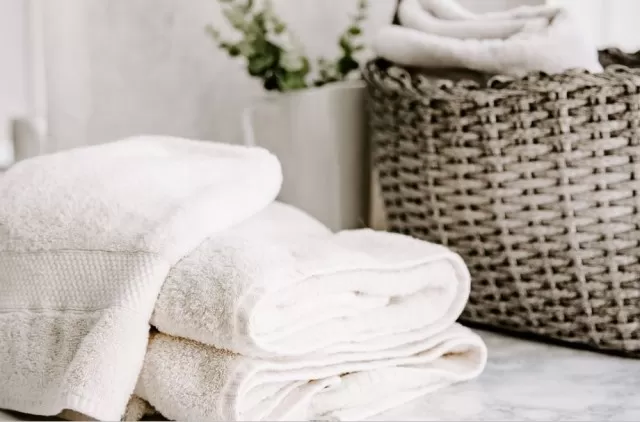
When it comes to washing towels with decorative trims, it’s important to take extra care to preserve the trims and prevent any damage.
Here are a few additional tips for washing towels with specialty trims:
Separate Towels:
If you have towels with decorative trims, it’s best to wash them separately from your regular towels.
This will prevent any potential damage to the trims and ensure they receive proper care.
Gentle Cycle:
When washing towels with decorative trims, use a gentle cycle on your washing machine.
This will help protect the trims from excessive agitation and reduce the risk of fraying or loosening.
Mesh Laundry Bag:
To provide an extra layer of protection, consider placing towels with delicate trims in a mesh laundry bag before washing.
This will help prevent the trims from getting tangled or pulled during the wash cycle.
Avoid Harsh Chemicals:
Be cautious with the use of harsh detergents, bleach, or fabric softeners when washing towels with decorative trims.
These chemicals can potentially damage or fade the trims. Instead, opt for a mild detergent that is suitable for delicate fabrics.
Air Dry or Low Heat:
After washing, it’s best to air dry towels with specialty trims.
Hang them up or lay them flat to dry naturally. If you prefer using a dryer, choose a low heat setting to prevent any heat damage to the trims.
By following these tips, you can help preserve the decorative trims on your towels and ensure they remain in good condition for a longer period.
Towel Buying Tips
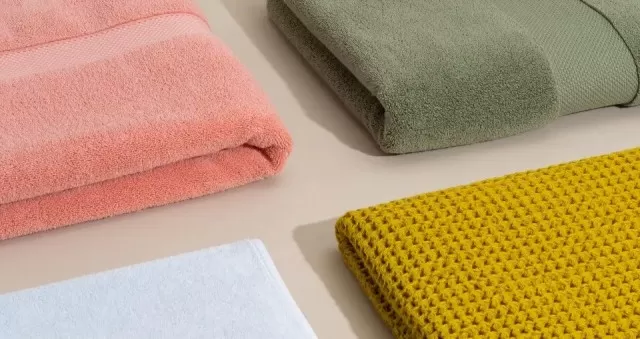
Match Towels to Your Style:
Choose towels that complement your bathroom decor and personal style.
You can opt for classic white towels for a clean and spa-like feel, or explore various colors, trims, and patterns to add a pop of color and personality to your bathroom.
Consider Towel Materials:
Cotton is a popular choice for bath towels due to its absorbency and durability.
Look for towels made of high-quality cotton, such as 100% cotton, to ensure optimal performance. Keep in mind that sheared towels, where the loops are cut off, may be highly absorbent but not necessarily the best for drying.
The number of loops per square inch is a good indicator of a towel’s performance.
Follow Care Instructions:
To maintain the quality and longevity of your towels, always follow the care instructions provided by the manufacturer.
Different towels may have specific washing and drying recommendations, so it’s essential to read and follow those instructions to ensure proper care.
Consider Buying Extras:
Over time, colorful towels may fade, so if you prefer vibrant colors, you may want to consider buying some extras to replace them when needed.
White and neutral-colored towels tend to have more longevity and can coordinate well with any bathroom color scheme.
By considering these tips, you can choose towels that not only match your style but also offer durability, absorbency, and easy maintenance.
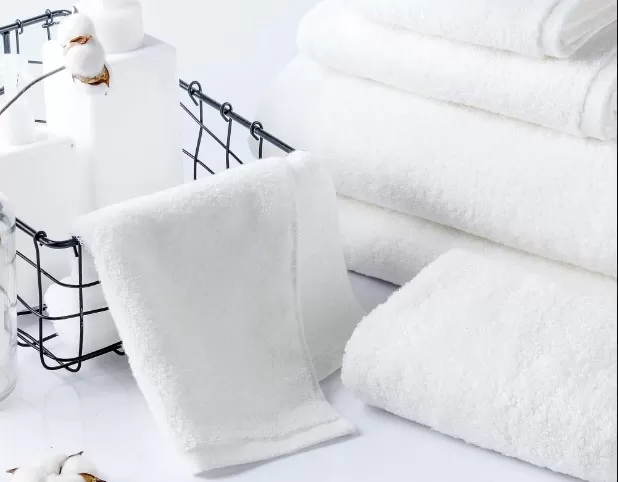
Bath Towels:
a. Lay the towel flat on a clean surface.
b. Fold the towel in half lengthwise, bringing the top edge down to meet the bottom edge.
c. Fold the towel in half again, this time folding from the left side to the right side.
d. Fold up the bottom third of the towel.
e. Fold the top third of the towel down, overlapping the folded bottom third.
f. To store the towel, place it on a shelf with the outer edge facing the front for easy access.
Hand Towels:
a. Lay the hand towel flat on a clean surface.
b. Fold the towel in half lengthwise, bringing one end to meet the other.
c. Fold the towel in half again, folding from the left side to the right side.
d. To store the hand towel, place it on a shelf with the outer edge facing the front for easy access.
For linen bathroom hand towels that you wish to have a crisp finish:
a. After ironing the linen towel, lay it flat on a clean surface.
b. Fold the towel in half lengthwise, bringing one end to meet the other.
c. Fold the towel in half again, folding from the left side to the right side.
d. To store the linen hand towel, place it on a shelf with the outer edge facing the front for easy access.
*The information is for reference only.